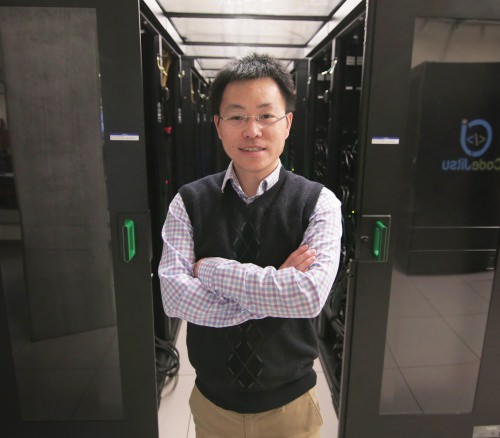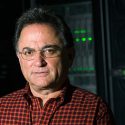Learning computer ‘assistant’ can simplify complex chip design challenges
With applications in devices such as lasers and solar panels, or as alternatives to the curved lenses in powerful microscopes or telescopes, metasurfaces — flat optical chips — offer unparalleled control of light.
Created through a monolithic process, each tiny feature on a metasurface can perform its own unique light-scattering task — yet all of those features work together to perform a unified optical function.
However, because of the size, versatility and complexity of a metasurface, one of the greatest challenges for engineers is the enormous computational power and time required to model their desired surface.
As a result, researchers mainly design metasurfaces experimentally, based on their own experience and knowledge — and even for experts, that’s somewhat of a hit-or-miss process.
“It’s challenging that experience-based design can’t explore a huge design space, and on the other hand, entirely computationally driven design is prohibitively expensive,” says Zongfu Yu, a professor of electrical and computer engineering at the University of Wisconsin–Madison.
Yu is pursuing a much more reliable, time-saving solution that will shake up this very traditional design process.
With a prestigious young faculty award and $500,000 through the U.S. Defense Advanced Research Projects Agency, Yu is using the power of machine learning to make the design process more efficient — and in the process, more accurate and cost-effective.
Think “virtual design assistant.”
Drawing on the unique and powerful computational resources in the UW–Madison Center for High Throughput Computing, Yu will “train” the computer by providing it with the information and examples it needs to make quick, informed metasurface design decisions.
And though this training is no small feat, Yu says even a large up-front time commitment in creating the huge data sets required will save countless hours in the long run.
“It’s just a one-time investment,” he says. “Once the machine is trained on this data, this ‘machine learner’ will never cease to improve as it sees more and more metasurface examples over time. If you rely completely on computational design, you will need to do lots of extensive computation with no learning — there’s no buildup of knowledge.”
Yu is using the power of machine learning to make the design process more efficient — and in the process, more accurate and cost-effective.
Recent advances in machine learning — and in particular, in deep-learning algorithms — are enabling this effort, which wouldn’t have been possible even a few years ago, according to Yu.
“People have used machine learning for designing radio frequency devices, but because of the limited computational power and algorithms at the time, the results weren’t great,” he says. “Deeper networks trained with bigger data sets prove to be a game-changer.”
The technology isn’t even remotely close to replacing human researchers, says Yu. However, he envisions it as an interactive experience between machine and researcher that will make metasurface design more reliable and efficient.
“Basically, you have a very experienced designer sitting beside you,” he says. “The machine facilitates the design process.”
Eventually, Yu hopes to share the “assistant” through an open-source platform. He says the machine learning algorithm and training data also could translate to other areas, such as solar energy conversion devices, microwave sensing and imaging systems, and integrated photonics for on-chip communication, among others.
Tags: computers, engineering, research




